CHAPTER 4
B U S I N E S S A N D I N D U S T R Y
I N O N E I D A C O U N T Y
B Y L O U P A R R O T T A
Oneida County, due largely to its location in central New York State, has been a crossroads of
❖
commerce throughout its history. Numerous businesses have come and gone since 1798, from Utica at the confluence of Genesee
factories and merchants taking advantage of the Erie Canal to the mom and pop stores and service-and Washington streets as it appeared
based businesses that are necessary to any population center.
during the early 1800s.
One of the most prominent industries in the county has been dairy farming, making Oneida County the third largest milk-producing county in New York State. From colonial times to the present day, the county has been home to families that work off the land. And from Ava to Whitesboro, the dairy industry has been and continues to be a staple in the county’s history.
Dairy farming naturally spurred the cheese-making industry. Communities such as Boonville, Clinton, Floyd and Trenton, among others, contained cheese factories that utilized surplus milk the dairy farms produced. David Brill opened a cheese-making factory in the town of Western in 1830.
His factory became a leading producer of limburger and cheddar, and at one time was so large an operation that thirty-six factories were operating in the town. The leader in this industry, however, was Rome’s Jesse Williams who established a system to mass produce cheese out of sweet milk. He opened his factory in Rome in 1851, and by the time 1864 rolled around, the city was known as the
“cheese capital of the world.” Sangerfield capitalized on the popularity of this industry by opening a cheese box factory that was operated by Benjamin Stetson and family for over 150 years.
T O W N B Y T O W N
Each community made the most out of the resources, natural and manmade, that existed within its borders. The Town of Ava boasted lumber mills throughout the 1800s as well as blacksmith and C h a p t e r 4 ✦ 5 5

XXON Chapter 4_Layout 1 1/23/2015 1:08 PM Page 56
harness shops. These were in addition to its
parent company of knitting goods factories that
cheese factories, most notably Ohm’s Factory
crisscrossed central New York.
that closed amidst the Great Depression. Today,
Currently, the Mystic Stamp Company, a
dairy farming is among its biggest industries.
renowned haven for collectors of postage
Boonville, another North Country
stamps founded by Lawrence Shaver, calls
community surrounded by an abundance of
Camden home. Known around the world,
trees, operated sawmills and other wood-
Mystic has been a staple in the philately world.
dependent industries throughout the 1800s. A
Collectors from all corners of the world utilize
gristmill and tannery also operated during that
the first class service provided in the western
time. Today, Boonville is home to the Oneida
part of Oneida County. Additionally, Camden
County Fair, Woodsmen Field Days, and the
Wire Company, opened in 1929, fabricates
famed Hulbert House that was originally
copper wire and wire products in four plants
opened in 1819 by Ephraim Owen.
and is the community’s principal employer.
Bridgewater, sporting some of the most fertile
Further south in Clayville a shovel factory,
lands in all of Oneida County, has an
scythe factory, and a blast furnace existed during
agricultural history that included hop raising,
the first half of the 19th century. The
sheep raising, and dairy farming. Small
settlement’s original name—Paris Furnace—
industries abounded here, including inns,
alludes to the ironwork that defined its early
blacksmith shops, and stores.
years. It was after an 1849 visit by perennial
In Camden, Jesse Curtis ran a sawmill on Fish
presidential candidate Henry Clay that the
Creek around 1794, and with the creek
village decided to rename itself in honor of their
providing water power, Horace McIntyre and
esteemed guest.
James Barger ran a foundry in 1832. C. A.
The Oriskany Creek powered a grist mill in
Boehm and James Stark operated a carriage shop
Clinton as early as 1787. Ten years later,
in 1864 that produced horse-drawn vehicles that
hematite iron ore was discovered and mined
specialized in travois bobs and cutters. The
until the 1960s. During the last half of the 19th
Farnsworth family has operated a printing
century, Clinton housed two large blast furnaces
business since 1886 specializing in milk tickets.
that turned out tons of cast iron. And, in 1887,
The McCall Brothers opened a canning factory in
the famed drug company, Bristol-Myers-Squibb
❖
1872 and in 1883 the Camden Knitting Mill
Company was born on Park Row in the village.
Dairylea’s delivery fleet, c. the
opened under the auspices of W. J. Frisbie and
Two of the founders, William Bristol and John
late 1920s.
W. H. Stansfield. The company became the
Myers, were Hamilton College graduates.
5 6 ✦ O N E I D A C O U N T Y : A n I l l u s t r a t e d H i s t o r y

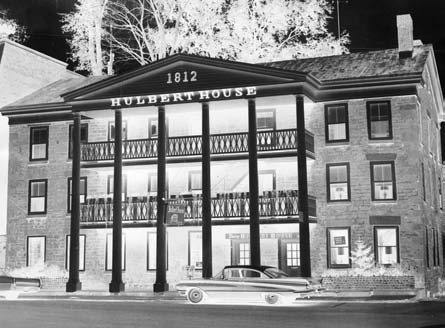
XXON Chapter 4_Layout 1 1/23/2015 1:08 PM Page 57
Goods, The Upper Mills, Utica Common Mill, and
Woolen Mill in what is now known as
Washington Mills. Some of the United States’
finest shirting was produced at the Upper Mills.
Additionally, New Hartford had a tannery, a
bleachery, sawmills, a cider mill and a plaster mill.
One of New York State’s largest stone quarries
is in Oriskany Falls.
By 1880, the town of Paris’ largest industry was
the Empire Woolen Company. The Lewis Knitting
Tim Smith of Deerfield, the son of Pratt Smith,
Mill produced silk in the county beginning in the
❖
became one of Oneida County’s most successful
early 1900s. In Remsen, Col. Mather Beecher
Above: Jesse Williams’ pioneering
farmers in the early 1800s. In Florence,
purchased the Noble & Blue Tannery in 1812 and
cheese factory was located in Rome,
blacksmiths, asheries, tanneries, sawmills,
turned it into one of the country’s first shoe
near the present-day site of the Rome
harness shops, cobble shops, gristmills, and
factories. Also in the early 1800s in Remsen, John
Fish Hatchery.
cheese factories operated along with several
R. Ellis opened a foundry and machine shop to
hotels, general stores, and even a casket factory.
manufacture steam boilers, cheese presses, and
Below: Boonville’s ‘Hulbert House’
The Town of Floyd featured small industries
treadwheels for churning. Brick manufacturing
has been a fixture in the northern
including a sawmill and a tannery. In the early
was also a solid industry in Remsen.
Oneida County community for over
1950s, the United States Air Force purchased
The town of Sangerfield, home to the village
two centuries.
land that would become a test site for various
of Waterville, was where the famed inventor
radar and related experimentations. On August
George Eastman was born in 1854. Eastman
12, 1960, the first intercontinental voice
would go on to develop a practical camera and
message by satellite originating in Trinidad, was
emulsion film which brought photography to
received there.
millions around the world. He is the founder
The appropriately named Forestport
and namesake of the Eastman Kodak Company
capitalized on the dense forests with the
in Rochester, New York.
operation of sawmills; a tannery operated
Hop farming was the major industry
nearby in the hamlet of Woodhull.
throughout the 1800s in Sangerfield. At one
Cotton mills were begun by the Clark
point, the town was the main shipping point
Brothers in Kirkland in 1846, where hop
for hops and the exchange center for hops in
farming was also a prevalent industry.
all of the United States. In addition to hops,
In Marcy the Window Glass Company
opened in 1812. This firm, later known as the
Utica Glass Company, implemented the first
production line system in Oneida County. Other
industries in Marcy were sawmills, a corn mill, a
grist mill, a trip hammer and some tanneries. In
1931, the Marcy State Hospital opened, once
housing over 3,000 patients in need of mental
health services. Today, the hospital serves as a
part of the Central New York Psychiatric Center.
The town of Marshall has two farms that date
back to the late 1790s, the Malecki and Wardwell
Barker Farm (opened in 1795) and the Thaddeus
McConnell Farm (opened in 1796). Additionally,
an iron forge opened at Forge Hollow that made
gun barrels for Remington Arms in nearby Ilion.
Mills were prominent in New Hartford,
including cording mills and knitting mills. Some
of the most notable included Olympian Knit
C h a p t e r 4 ✦ 5 7
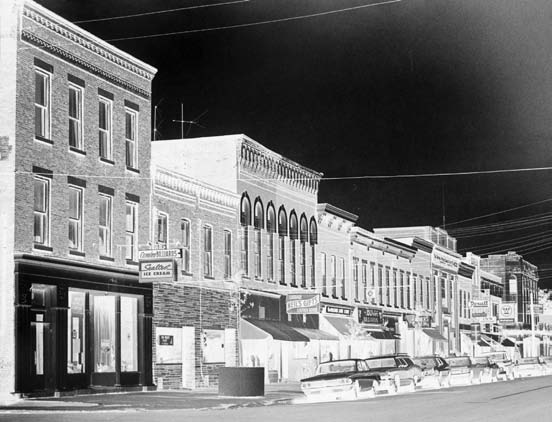
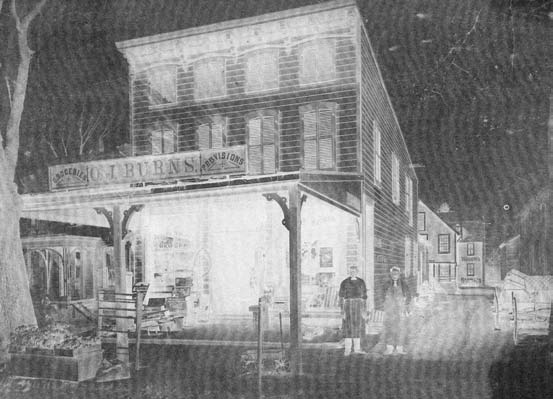
XXON Chapter 4_Layout 1 1/23/2015 1:09 PM Page 58
❖
Right: A view of the business district
along Camden’s Main Street, c. 1969.
Below: Clinton village merchant O.J.
Burns also contributed to the
community as a trustee of the Clinton
Union School, where he was
appointed as a trustee in 1894.
dairy farming was important, as well as
The Oneida community was the focal point of
brick and tile manufacturing. In 1973, Titan
Sherrill for many years. Started by John
Homes opened and remains a staple in the
Humphrey Noyes, the utopian community started
community’s economy.
out canning fruits and vegetables, but eventually
5 8 ✦ O N E I D A C O U N T Y : A n I l l u s t r a t e d H i s t o r y
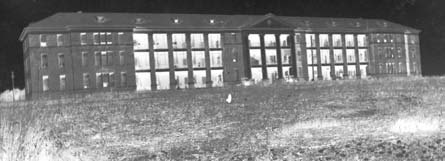
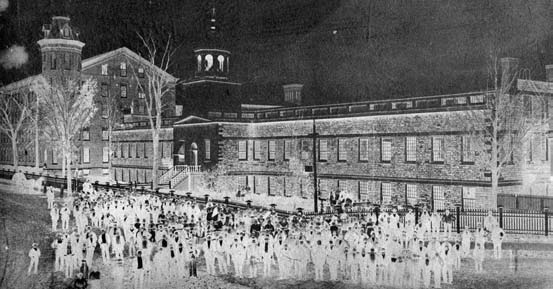

XXON Chapter 4_Layout 1 1/23/2015 1:09 PM Page 59
morphed into the manufacture of traps and
chains, then silver knives, forks and spoons. This
community invented washing machines,
dishwashers, machines for paring apples, and a
machine for washing vegetables. The Oneida
Community formed Oneida Limited, later known
as Oneida Silversmiths, but by the dawn of the
21st century, the manufacturing of silverware was
suspended and the factories closed.
Steuben, named after the famed Baron von
Steuben of Revolutionary War fame, has mostly
1920s. Prior to that, the community employed
❖
been an agricultural community. Cattle and
sawmills and blacksmith shops, and operated
Top: Construction of the Marcy State
sheep farming has been a fixture there since the
cheese factories.
Hospital, taken July 1925.
Middle: Employees of the New York
Mills gathered in front of their factory
for this middle 19th century shot.
Bottom: The old dye house for Mills
No. 3 and No. 4 in New York Mills.
Originally built as a grist mill for
flour around 1800, during the
1820s proprietor Benjamin S.
Walcott converted the building to
handle cotton.
C h a p t e r 4 ✦ 5 9
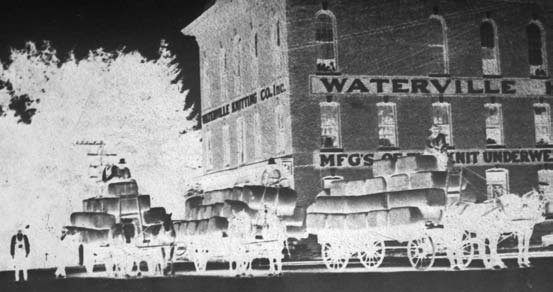

XXON Chapter 4_Layout 1 1/23/2015 1:09 PM Page 60
❖
Taberg, another manufacturing town, had
and cider production, and in Holland Patent
Above: Like most Oneida County
numerous mills operating within its boundaries.
limekilns once operated.
settlements, the village of Waterville
Included among the more common sawmills
The Sconondoa Creek provided power to the
was involved in the manufacture and
and gristmills were planing and shingle mills.
residents of Vernon in the late 1700s allowing
distribution of textiles. Although it
Facilities for carding wool and pressing apples
them to operate five sawmills, three gristmills,
ceased operations decades earlier, the
for cider also prospered. Factories that were
two tanneries, a carding mill and a distillery. In
former Waterville Knitting Co.
operational included canning, butler tub, shoe,
the first half of the 19th century, glass factories
building would last until the early
cheesebox and fishing tackle.
such as Mount Vernon Glass (1810-1844),
2000s, when it was finally torn down.
The town of Trenton had a limestone quarry
Oneida County Glass (1809-1836) and Seneca
that produced material for the Baron von
Glass Company (1810-?) operated. Abram Van
Below: Oneida Community residents
Steuben monument in Steuben and numerous
Eps, the proprietor of the first stores opened in
on the grounds of the Community
buildings in the City of Utica. Bricks were
Oriskany and Westmoreland, opened Vernon’s
Mansion; from these beginnings came
manufactured in South Trenton, while in
first store in 1798. He also opened the first flour
the Oneida silverware industry that
Hinckley a sawmill produced boards, broom
and grist mills which ran until the 1950s.
lasted over a century in the county.
handles, woodlath and joists. In Wethersfield
In neighboring Verona, agriculture was
farming was prominent along with maple syrup
prominent and spurred a prosperous canning
industry. Among the notable canneries were the
Oneida Canning Factory, Empire State Canning,
and Murphy’s Custom Canning Company. For
almost 100 years the region’s timber reserves fed
a boat building industry, while the latter half of
the 1800s saw glass factories thriving. Glass
production was so big, the Durhamville &
Dunbarton Company was one of the largest of
its kind in the entire country.
Frank Harden opened the Frank S. Harden
Company in 1902 in Vienna producing over
300 designs of furniture available all over the
United States. Capitalizing on the tremendous
lumber resource available to him, Harden built
a nationally renowned company which has been
family-owned and operated ever since.
Westmoreland, as with many of the other
communities, was noted early on for its
6 0 ✦ O N E I D A C O U N T Y : A n I l l u s t r a t e d H i s t o r y
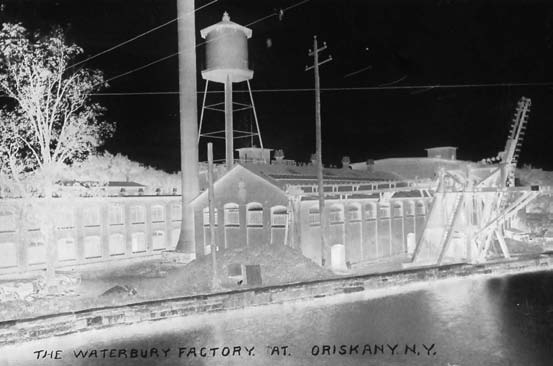
XXON Chapter 4_Layout 1 1/23/2015 1:09 PM Page 61
agriculture. One difference here, however,
the tavern into a large hotel that was operational
❖
was that beyond dairy and hop farming,
until the 1930s. Jason Parker operated an early
The site of the Waterbury factory in
corn and grain was also harvested. The town
stagecoach business in 1795. When the Erie
Oriskany has been a going concern in
was also noted for its iron industry with the
Canal opened in 1825 Utica became a leading
the story of Oneida County’s industry
development of the Westmoreland Malleable
transportation center which continued to grow
since the 1810s.
Iron Company under the auspices of Erastus
with the coming of the railroads in the 1840s.
Clark and Abel B. Buell.
Again, Utica’s central location in New York State
Like Westmoreland, Whitesboro had an
was paramount to this development.
established iron works factory that was founded
From the early 1800s until the mid-1900s,
by B. T. Babbitt. This company manufactured
the textile industry employed thousands of
items such as cannons and Pullman Car
residents. Mills such as the Utica Steam Cotton
ventilators. After Babbitt’s death in 1880,
Mills, the Utica Steam Woolen Mills, and the
Charles Powell created Alliance Knitting to
Globe Woolen Mills operated by steam power
make sweaters and underwear. Another notable
and dominated the century known as the
Whitesboro industry was the Quigley Furniture
“Textile Era.” Other prominent business entities
Company (originally Sutton & Quigley) which
included the first commercial electric telegraph
produced roll top desks and office furniture
company founded in 1845 by John Butterfield,
between the 1870s and the 1950s.
Theodore Faxton and Hiram Greeman, John
Butterfield’s Overland Mail Company that
U T I C A A N D R O M E
became the first to deliver mail and passengers
from the Mississippi River to California in fewer
The City of Utica began as Old Fort Schuyler
than 25 days, and Arthur Savage’s weapons
on the south side of the Mohawk River. Prior to
factory—Savage Arms—in the eastern part of
becoming a city in 1832 it boasted some of the
the city.
region’s earliest hotels, inns, taverns, blacksmith
The extensive production of hops around the
shops, wagon repair shops and stores. Utica’s
region fed a thriving beer-making industry in
first major merchant was John Post who sold
Utica. In concert with America’s 19th century
tobacco, blankets, ammunition, and whiskey. In
saloon culture, breweries including Eagle, Gulf,
1794 Moses Bagg Sr. opened the iconic tavern
and West End found plenty of local outlets for
that bore his name. His son, Moses Jr., turned
their product.
C h a p t e r 4 ✦ 6 1

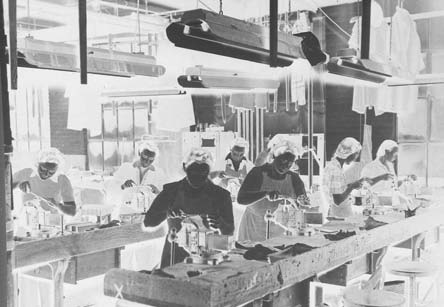
XXON Chapter 4_Layout 1 1/23/2015 1:09 PM Page 62
For a while firms like General Electric, Sperry,
and Chicago Pneumatic gave hope to the local
economy, but it was not enough.
As these firms shuttered operations the city
fell on hard times. The decline of the 1970s was
made worse by America’s post-World War II
urban-to-suburban population shift, which
gutted downtown Utica as retailers followed the
middle class to outlying areas. As Americans
found new ways to shop and explored
opportunities for work in the digital age, it
seemed as though the city’s best days were
behind it.
While some small and light manufacturers
like Indium Corporation remained viable in the
1980s, service-based and health-based
industries began to thrive. As a result, health
care facilities have become one of the city’s
❖
The passage of the 18th Amendment in 1919
major employers. Higher educational
Above: This shot captures women at
ushered in the age of Prohibition and was a
institutions (explored in greater detail elsewhere
the Savage Arms plant in East Utica
death knell for most of the breweries, but one—
in this book) matured and became important
at their work stations. During World
the West End Brewing Company—survived and
employers. Utica College, Mohawk Valley
War II thousands of women replaced
exists today as Matt’s Brewery. Now in its fourth
Community College, the Utica School of
men in America’s factories; Savage
generation of family ownership, the Matt family
Commerce, and the SUNY Polytechnic Institute
Arms was no different.
runs what is, at the time of this writing, the sixth
continue to grow and evolve in the 21st century.
largest craft brewery in the United States.
The adaptive reuse of Utica’s infrastructure
Below: During the early 20th century,
Unfortunately the same cannot be said for local
has been trending upward since the 1990s.
Utica indulged in America’s growing
hops production, which did not recover after
Former churches have been occupied by
obsession with the automobile. Several
Prohibition’s repeal in 1933.
nonprofit organizations including the
companies sprang up to meet the
Once the textile factories began to close up
Community Foundation of Oneida and
demand; one was Bailey & Bowne on
shop in the middle of the twentieth century, a
Herkimer Counties (former First Assembly of
Whitesboro Street, which
remake of the economy had to occur. The 1950s
God) and the Oneida County Historical Society
manufactured truck bodies. This
and ‘60s came to be known as the ‘loom to
(former First Church of Christ, Scientist).
example was delivered in 1920 for
boom’ period, as Utica’s leaders sought to lure
Storefronts that were empty for years are seeing
use by the Waterman Apple Product
high tech industries in to replace the factory
new life as small retailers and restaurants move
Corporation in Sauquoit.
jobs that headed south with the textile firms.
in. A great example is the renovation of the
Bagg’s Square district in downtown Utica, where
former factories and warehouses now feature
loft apartments above first-floor businesses.
As previously stated, Rome was home to the
first industrial-scale cheese factory in the
county, but it is known for so much more. Rome
Iron Works opened in 1866, and be
















